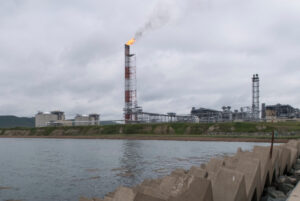Menu
Uplift in Oil Prices Amid US Fuel Demand Surge and Ongoing Supply Disruptions
- Junnel G
- March 14, 2024
- 5:58 pm

In a notable development in the oil markets, prices experienced an uptick during early trading on Thursday, propelled by a robust demand for fuel within the United States, alongside persistent concerns over supply disruptions. This comes against the backdrop of recent Ukrainian offensives on Russian oil refineries, further intensifying the situation.
The positive movement in oil prices was evidenced as Brent futures for May ascended by 11 cents, reaching $84.14 a barrel, while the U.S. West Texas Intermediate (WTI) for April saw a similar increase of 10 cents, stabilizing at $79.82 per barrel. This increase follows a substantial 3 percent rise on Wednesday, marking a four-month peak driven by an optimistic demand forecast in the U.S. and escalating geopolitical tensions.
Analysts from ANZ highlighted the significant factors influencing the current market dynamics, including a noteworthy decline in U.S. gasoline stocks to a three-month nadir, spurred by strong exports of U.S. products. Additionally, an increase in gasoline prices has bolstered the crack spread for refiners, while market sentiments have been shaped by the geopolitical risks following a Ukrainian drone attack on a Russian refinery.
Further insights from the Energy Information Administration (EIA) reveal a consecutive six-week drop in U.S. gasoline inventories, with a substantial reduction of 5.7 million barrels. This decline surpassed the anticipated 1.9 million-barrel draw, positioning gasoline stocks at 234.1 million barrels. The U.S. Gulf Coast, in particular, reported its lowest motor fuel stocks since November 2022, while demand metrics indicated a slight increase in finished motor gasoline supplied, surpassing 9 million barrels per day (bpd) for the first time within the year.
The U.S. has also bolstered its Strategic Petroleum Reserve by purchasing approximately 3.25 million barrels of oil for August delivery, further reflecting the country’s response to the current market conditions.
On the supply front, the scenario remains tense with continuous Ukrainian drone strikes on Russian refineries, marking a significant escalation in attacks on Russia’s energy sector. The largest refinery owned by Rosneft in Ryazan experienced a fire due to one such attack, leading to the shutdown of two primary oil refining units, as per reports from sources familiar with the situation.
Market analysts, including OANDA’s Kelvin Wong, suggest that the recent surge in oil prices can be attributed to tightened supply-side factors. However, with the upcoming Federal Open Market Committee (FOMC) meeting on March 20, there may be some market consolidation expected around the $80.55 to $81.65 per barrel resistance zone for WTI crude.
This convergence of robust U.S. fuel demand and geopolitical-induced supply concerns continues to shape the oil market landscape, highlighting the intricate balance between demand dynamics and geopolitical risks.
#Top Tags COVID Covid-19 Technology Finance Investing Sustainability Economy

Subscribe to Our Newsletter and get a free pdf:



















Comments are closed for this article!